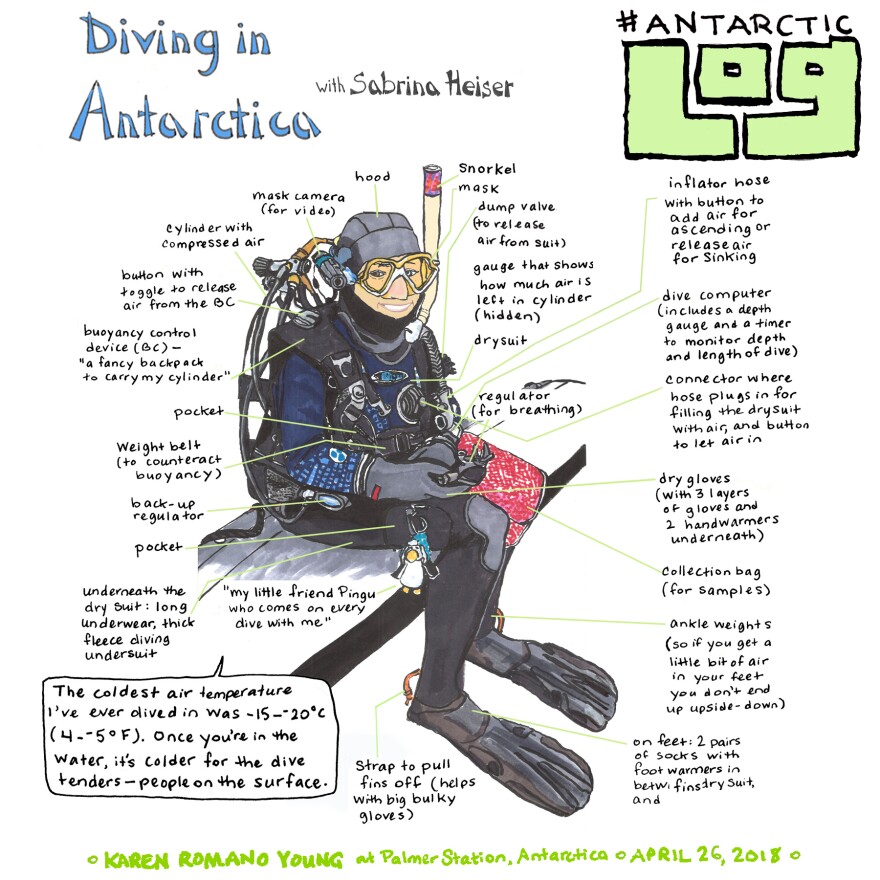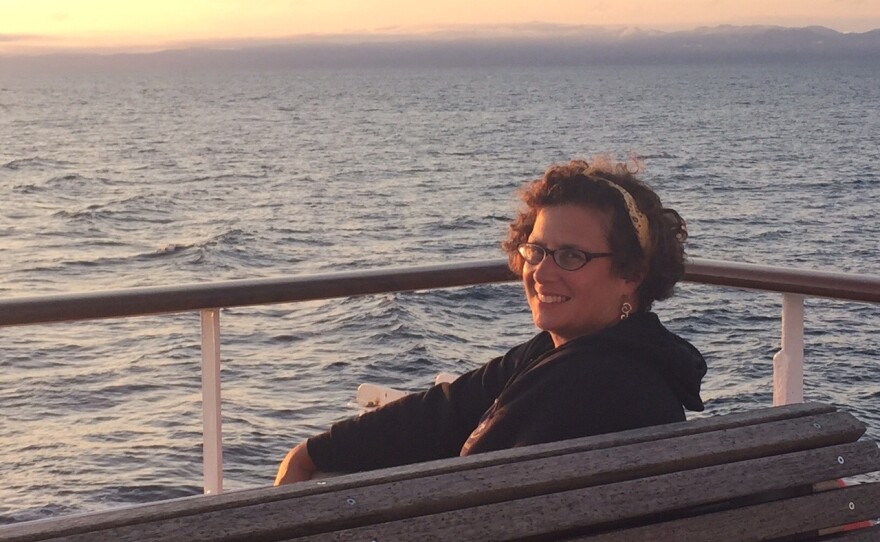Many kids are fascinated by sharks, but most shark books are pitched to younger readers. So Karen Romano Young decided to write a comprehensive book on sharks for older kids.
It's called "Shark Quest: Protecting the Ocean's Top Predators" -- and it's part of our back-to-school book series.
Young is a deep-sea diver, children's book writer and comics artist from Bethel, Connecticut. She spoke with NEPR's Tema Silk about these mysterious and often maligned creatures of the deep.
Tema Silk, NEPR: This book is absolutely chock-full of information and factoids, if I may use that word.
Karen Romano: Yes, it's a nerd fest. It totally is. I'm a science nerd. I'm a shark and whale nerd. I embrace that, and I embrace people who feel that way about sharks and whales. Why not learn more about what you're passionate about?
Not everyone instantly thinks of sharks as being in need of protection. You want your readers to fear sharks less and protect them more. Isn't that right?
Sharks are amazing. Everyone knows that, and they are terrifying. Why? Because they have big teeth and because they know how to come after you and they know how to find you. And bite you. However, that is not their aim in life.
They're trying to get fed, and don't usually eat people -- there aren't usually people in their environment.
If there has been any increase at all in shark attacks, it's because people are increasingly in shark waters. You know, we're visitors there, and occasionally they make a mistake, and they think that you're a seal, and you get bitten.
There are so few deaths each year resulting from shark attacks -- far fewer than deaths caused by sitting under a coconut tree and getting bonked on the head.


However, sharks are vital to our environment: Scallops are typically fed upon by cownose rays, and cownose rays are typically fed upon by hammerhead sharks. So what happens when there are too many hammerhead sharks being killed by fishing, by catch or by pollution? You get too many cownose rays, and the cownose rays are eating too many scallops, and it's knocked out a 100-year-old North Carolina scallop fishery. This is just one example of why we need sharks.
You talk a good deal in "Shark Quest" about sharks' really impressive evolution and adaptability. They've been around for over 400 million years, right? Pretty impressive, and much longer than humans.
Oh yes.
How about your own evolution? Can you tell us a bit about how you became a deep-sea diver and a writer of children's science books and comics creator? It strikes me as a pretty unusual niche.
Yeah, we all do evolve into our niche, as sharks have. They've been around for, like you said, more than 400 million years, and in the last hundred million years, they haven't changed that much, which means they're highly evolved.
I, myself, am still going through my own development as an artist. I started off working for Scholastic Magazine, that magazine that you would get on your desk that gave you all the news as a sixth grader. And I had to do everything -- I had to talk to sports stars, and movie stars, and Girl Scout leaders, and everyone. And I very quickly realized that people that I liked talking to the most were scientists.
Scientists were excited about everything that they were doing. They loved their lab work. They loved their field work. And they went out and had enormous adventures.
I started trying to write all the science articles. And after a while, I realized that I was doing a lot of research for a short amount of words, and I wanted to write longer pieces, so I started doing books about science.
When I came back to illustration after a long time of being away from art, what I wanted to do was science comics. I wanted to bring people who didn't think they were maybe interested in science in through a different door than words. So I began doing science comics about eight years ago, and some of them are in "Shark Quest" that you can see.



And what about the deep-sea diving part?
I got an amazing job through some luck. I was doing a story about all of the people who were going out on a research cruise, and one of the people is the person who is going to be doing shipboard education and outreach. And when I called her, she said she wasn't going. And so I went back to them and said, "She's not going, but I'll go!"
So just because it was last-minute, and because I was a live body and willing to go, I got to go aboard the ship to dive down to the volcanoes that are erupting at the bottom of the ocean, hydrothermal vents.
And that started me on this track of finding ways to tell news stories about scientists aboard ships and in the field.
















